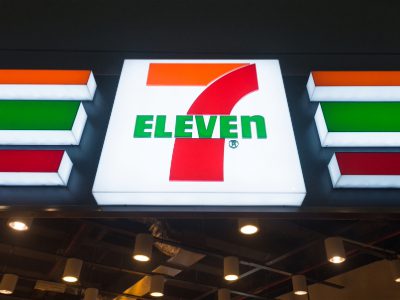A Convenience Store Pioneer: The Evolution of the 7-Eleven Franchise System

The 7-Eleven franchise system stands as a cornerstone in the convenience store industry, offering a diverse range of products and services to consumers around the world. The history of 7-Eleven is a testament to innovation, adaptability, and a commitment to meeting the evolving needs of customers. This overview traces the roots of the 7-Eleven franchise system, examining key milestones, innovations, and strategies that have shaped its remarkable journey.
I. Origins and Early Years:
The story of 7-Eleven dates back to 1927 when Southland Ice Company, the predecessor of 7-Eleven, began selling milk, eggs, and bread from ice house storefronts in Dallas, Texas. Realizing the potential of providing convenience items beyond ice, the stores began operating under the name Tote’m. The concept of extended hours, even late into the evening, was revolutionary at the time, catering to the needs of a changing society.
In 1946, Tote’m stores were rebranded as 7-Eleven to reflect their commitment to being open from 7 a.m. to 11 p.m., a significant expansion of operating hours compared to other retail establishments of that era. This move marked the birth of the 7-Eleven brand that would become synonymous with convenience.
II. Franchising Takes Center Stage:
The 7-Eleven franchise system truly gained momentum in the 1960s when the company adopted the franchising model. This shift allowed individuals to own and operate their own 7-Eleven stores, creating a network of independently owned and operated franchises united under the 7-Eleven brand.
The franchising model brought about a remarkable expansion of 7-Eleven stores across the United States and eventually around the world. Franchisees played a crucial role in bringing the brand closer to local communities, adapting to regional preferences, and contributing to the overall success of the 7-Eleven system.
III. Innovations in Convenience Retailing:
1. Slurpee – The Iconic Frozen Beverage:
In the late 1950s, 7-Eleven introduced the Slurpee, a semi-frozen carbonated beverage, which would go on to become one of its most iconic offerings. The Slurpee was not only a refreshing beverage but also a symbol of 7-Eleven’s commitment to innovation in convenience retailing.
2. Extended Operating Hours:
The concept of extended operating hours was a game-changer in the convenience store industry. 7-Eleven’s commitment to staying open during evenings and weekends addressed the changing lifestyle of consumers, providing them with access to everyday necessities at their convenience.
3. Scan-and-Pay Technology:
7-Eleven has consistently embraced technological innovations to enhance the customer experience. The introduction of scan-and-pay technology allowed customers to expedite their shopping process, aligning with the increasing demand for efficiency and convenience in the digital age.
IV. Global Expansion and Diversification:
1. Entry into International Markets:
Building on its success in the United States, 7-Eleven embarked on an ambitious journey of international expansion. The first international 7-Eleven store opened in Canada in 1969, marking the beginning of a global presence. Today, 7-Eleven operates in numerous countries, tailoring its offerings to suit diverse cultural preferences.
2. Diversification of Product Offerings:
Over the years, 7-Eleven has evolved beyond traditional convenience store items. The product portfolio expanded to include fresh foods, snacks, beverages, and an array of everyday necessities. This diversification not only met the changing needs of consumers but also positioned 7-Eleven as a one-stop-shop for a variety of products.
V. Adaptation to Changing Consumer Trends:
1. Fresh and Ready-to-Eat Foods:
Recognizing the growing demand for fresh and ready-to-eat foods, 7-Eleven expanded its offerings to include a variety of hot and cold food items. This strategic move catered to consumers looking for convenient, on-the-go meal options, enhancing the overall value proposition of 7-Eleven stores.
2. Mobile App and Digital Loyalty Programs:
Embracing the digital era, 7-Eleven introduced a mobile app and digital loyalty programs to enhance customer engagement. These initiatives not only offered convenience through features like mobile payments and order-ahead options but also provided a platform for personalized promotions and discounts.
VI. Community Engagement and Corporate Social Responsibility:
1. Local Community Involvement:
7-Eleven has demonstrated a commitment to being an integral part of the communities it serves. Local community involvement, sponsorships, and partnerships have been key components of 7-Eleven’s strategy, fostering a sense of connection between the brand and its customers.
2. Sustainability Initiatives:
In response to the growing emphasis on environmental sustainability, 7-Eleven has implemented various initiatives to reduce its environmental impact. These include energy-efficient store designs, waste reduction programs, and a focus on sustainable sourcing practices.
VII. Challenges and Future Outlook:
1. Competitive Landscape:
The convenience store industry is highly competitive, with new entrants and evolving consumer preferences posing ongoing challenges. 7-Eleven continues to navigate this landscape by staying agile and responsive to changing market dynamics.
2. Technological Disruption:
The rise of e-commerce and new technologies has altered consumer expectations. 7-Eleven addresses this challenge by leveraging technology to enhance the in-store experience, offering digital solutions, and embracing innovation in its operations.
3. Health and Wellness Trends:
As consumer preferences shift towards healthier lifestyles, 7-Eleven has responded by expanding its offerings to include more health-conscious options. The company continues to explore ways to align its product portfolio with evolving health and wellness trends.
The 7-Eleven franchise system has not only withstood the test of time but has also thrived by continually evolving to meet the needs of an ever-changing consumer landscape. From its humble beginnings as Tote’m to becoming a global convenience retail giant, 7-Eleven’s journey is a testament to the power of innovation, adaptability, and a commitment to providing convenience in every sense of the word. As 7-Eleven continues to shape the future of convenience retailing, its history serves as a valuable blueprint for success in the dynamic and competitive world of franchising.
For more information on how to find the right franchise model, search the Franchise Conduit pages here: https://www.franchiseconduit.com/explore/
For more information on how to Franchise Your Business model, contact FMS Franchise: www.FMSFranchise.com
